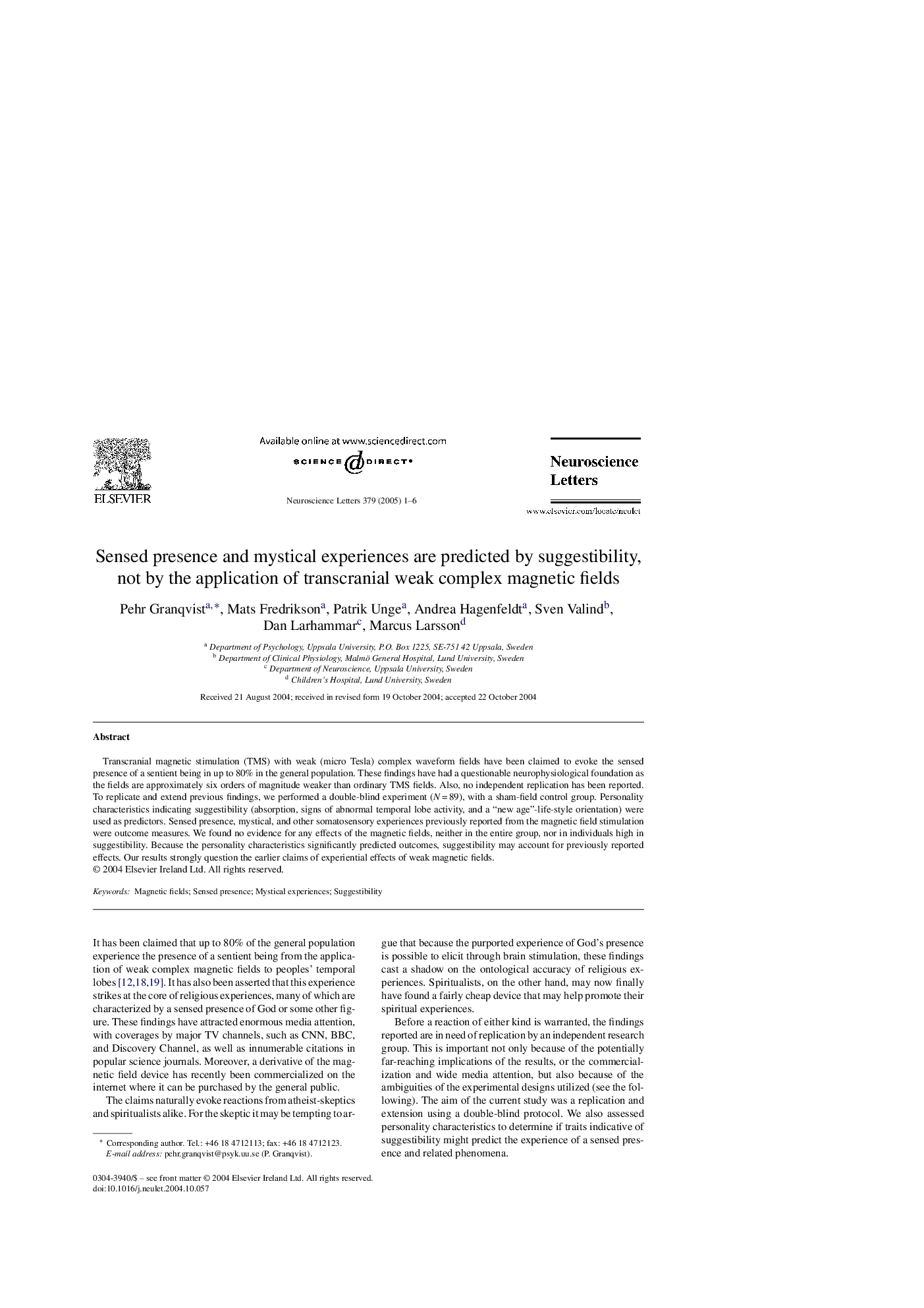| کد مقاله | کد نشریه | سال انتشار | مقاله انگلیسی | نسخه تمام متن |
|---|---|---|---|---|
| 9429279 | 1297037 | 2005 | 6 صفحه PDF | دانلود رایگان |
عنوان انگلیسی مقاله ISI
Sensed presence and mystical experiences are predicted by suggestibility, not by the application of transcranial weak complex magnetic fields
دانلود مقاله + سفارش ترجمه
دانلود مقاله ISI انگلیسی
رایگان برای ایرانیان
موضوعات مرتبط
علوم زیستی و بیوفناوری
علم عصب شناسی
علوم اعصاب (عمومی)
پیش نمایش صفحه اول مقاله

چکیده انگلیسی
Transcranial magnetic stimulation (TMS) with weak (micro Tesla) complex waveform fields have been claimed to evoke the sensed presence of a sentient being in up to 80% in the general population. These findings have had a questionable neurophysiological foundation as the fields are approximately six orders of magnitude weaker than ordinary TMS fields. Also, no independent replication has been reported. To replicate and extend previous findings, we performed a double-blind experiment (NÂ =Â 89), with a sham-field control group. Personality characteristics indicating suggestibility (absorption, signs of abnormal temporal lobe activity, and a “new age”-life-style orientation) were used as predictors. Sensed presence, mystical, and other somatosensory experiences previously reported from the magnetic field stimulation were outcome measures. We found no evidence for any effects of the magnetic fields, neither in the entire group, nor in individuals high in suggestibility. Because the personality characteristics significantly predicted outcomes, suggestibility may account for previously reported effects. Our results strongly question the earlier claims of experiential effects of weak magnetic fields.
ناشر
Database: Elsevier - ScienceDirect (ساینس دایرکت)
Journal: Neuroscience Letters - Volume 379, Issue 1, 29 April 2005, Pages 1-6
Journal: Neuroscience Letters - Volume 379, Issue 1, 29 April 2005, Pages 1-6
نویسندگان
Pehr Granqvist, Mats Fredrikson, Patrik Unge, Andrea Hagenfeldt, Sven Valind, Dan Larhammar, Marcus Larsson,